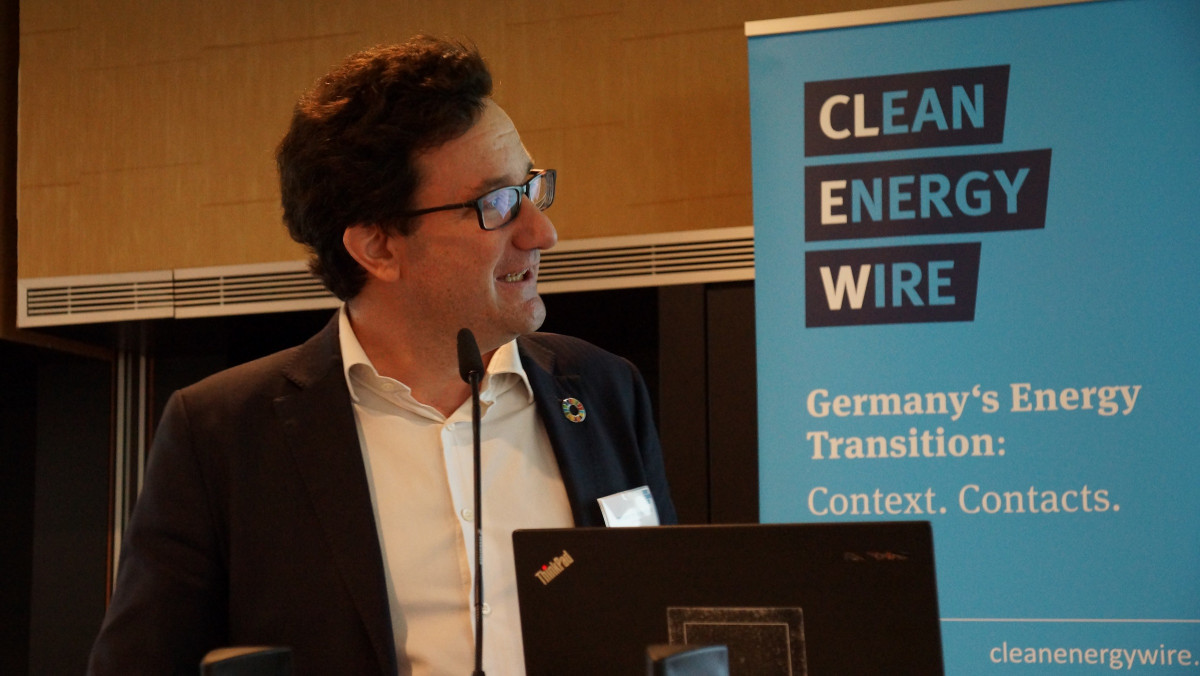Solution-oriented journalism: a matter of balance
How does Sparknews convince journalists that a solution-oriented angle can still be critical journalism?
Christian de Boisredon: By showing them that a solutions-oriented article is just as rigorous as any other article; it requires the same elements as a good “standard” story, if not more. Fact-checking is still mandatory, of course, but covering a solution also requires proving that (the solution) is actually efficient. A good solutions-oriented article provides a clear explanation of an issue and its consequences, and offers a solution, while proving its positive impact with facts and figures.
There are a lot of good ideas flourishing all across the world that aim to address global, social and environmental issues, but not all of them are actually impactful or have a sustainable business model. That’s why it also matters to show the limits and challenges of a solution, to remain critical at all times.
What if the solution is not immediately obvious? Would Sparknews still work with that particular story?
Solutions-oriented journalism shouldn’t replace the usual exposition of problems, rather it can complete it. In fact, it’s more of a method or a tool to approach a problem constructively, whenever solutions exist. Journalists should keep giving their readers context around problems, and unfortunately, some global issues are insolvable, but we should still talk about them, until we find an impactful solution worth covering.
If a solution doesn’t have a strong impact, it could be either because its actual power is limited, or because it’s too small. Even if it’s small and can’t possibly grow and/or be replicated —provided it already has a proven impact— then it’s worth being covered by a journalist. In the case where the envisioned solution doesn’t bring a concrete answer to the problem, then it’s out of the solutions scope.
Solutions-oriented journalism aims to show that, beyond problems, efficient solutions exist everywhere.
The energy transition is generally solution-focused, are there particular stories that stand out? How can a journalist, in your opinion present a positive angle about a certain technology, for example, without becoming a marketing agent for a particular company?
Usually, technologically innovative or “out-of-the box” solutions are the most popular among readers. For example, a few years ago, during our editorial collaborative programme on business solutions for climate change, Solutions&Co, a journalist covered SEaB Energy, a company that has developed and commercialised a unique, patented, packaged micro power plant (in a container) that turns food and organic waste into heat, electricity and water directly where waste is produced (i.e: near big retail stores). SEaB is now present in 13 countries.
Now to answer your second question, our criteria for shedding light on a solution-based story is that we consider it to be a good story, that the solution is relevant, has a proven impact that it is innovative and that can potentially be replicated or scaled up. If this solution is a company with a commercial approach, it’s not an issue. We are not paid by these companies and we cover them only because we believe they will bring a relevant answer to an issue. The sole fact that it’s a company is not a reason not to talk about their solution. Of course, it means that the investigation must be very serious, and must also address the limits of the solution.
To avoid marketing or advocacy, it is the job of the journalist —and this also counts for articles that don’t have a solutions angle— to check every aspect of the solution, to challenge it with interviews of experts on the matter and opinions of the solution’s beneficiaries in order to add nuance and accuracy.
Do you think people trust journalism that does not expose wrongdoing?
Our intuition at Sparknews is that people trust impactful journalism, whether it exposes wrongdoing or not. There are different ways of doing journalism and one shouldn’t exclude the other. What matters is to expose problems but also to give the keys to the readers to step up and take action instead of feeling paralysed by the amount of problems in the world. Solutions-oriented journalism aims to show that, beyond problems, efficient solutions exist everywhere. Our approach is not to develop media outlets that will deal only with solutions but to invite leading general media outlets to balance content. It’s a question of balance.
How important is collaboration in solution-oriented journalism?
It is really important. Solutions-oriented journalism requires time and money to be executed well, so that journalists can meet people, collect data and resources. Collaboration has a lot of advantages because it’s a way to do “more with less”, as we’ve witnessed during the international media programmes we organise regularly, with more than 70 media outlets across the world -- each produces a few articles and gets 50 for free from the other media partners. And all together, we can reach 300 million people each year.
Journalists use their field of expertise to write extensively and critically about familiar local solutions to come up with stories that their foreign media partners could probably not expect from their local correspondents. It’s also a way to make solutions travel: their innovative character can inspire readers in foreign countries, they can be replicated or compared to similar initiatives developed elsewhere.
For editors, it’s also a great opportunity to publish solutions on an international scale, to solve local problems with foreign solutions, and to team up with peers to shed light on local solutions to global problems; our mission, in essence. It also has the advantage of locally reported stories worldwide without having to spend money and emit CO2 by traveling to report on such stories!
Christian de Boisredon was a speaker at the 2019 conference of the CLEW Journalism Network, which brings together international reporters covering the energy transition. Find out more about the network here or join here.


